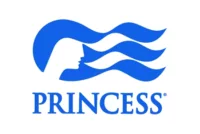
Princess Cruises
Credited with introducing millions of Americans to the concept of a modern cruise holiday, Princess Cruises is still innovating to this day.
Sporting a fleet of 17 ships with capacities ranging from 2,000 to 4,300 passengers, the line is best known for its Alaskan cruises, but travels to destinations the world over.
With an emphasis on destination leadership and local expertise, Princess is an excellent choice for the discerning traveller seeking to sail in comfort.
3140
Passengers
1200
Crew
2004
Launched
2019
Last refit
112894t
Tonnage
290m
Length
48.5m
Width
22kts
Speed
19
Decks
USD
Currency
Cruise Itinerary
Ship Details


Princess Cruises
Caribbean Princess
Savour carefree moments at sea with enticing cuisine, engaging entertainment and venues to match every mood
Exciting adventures await aboard Caribbean Princess following her multi-million-dollar array of luxurious enhancements.
Cabins
All Prices













